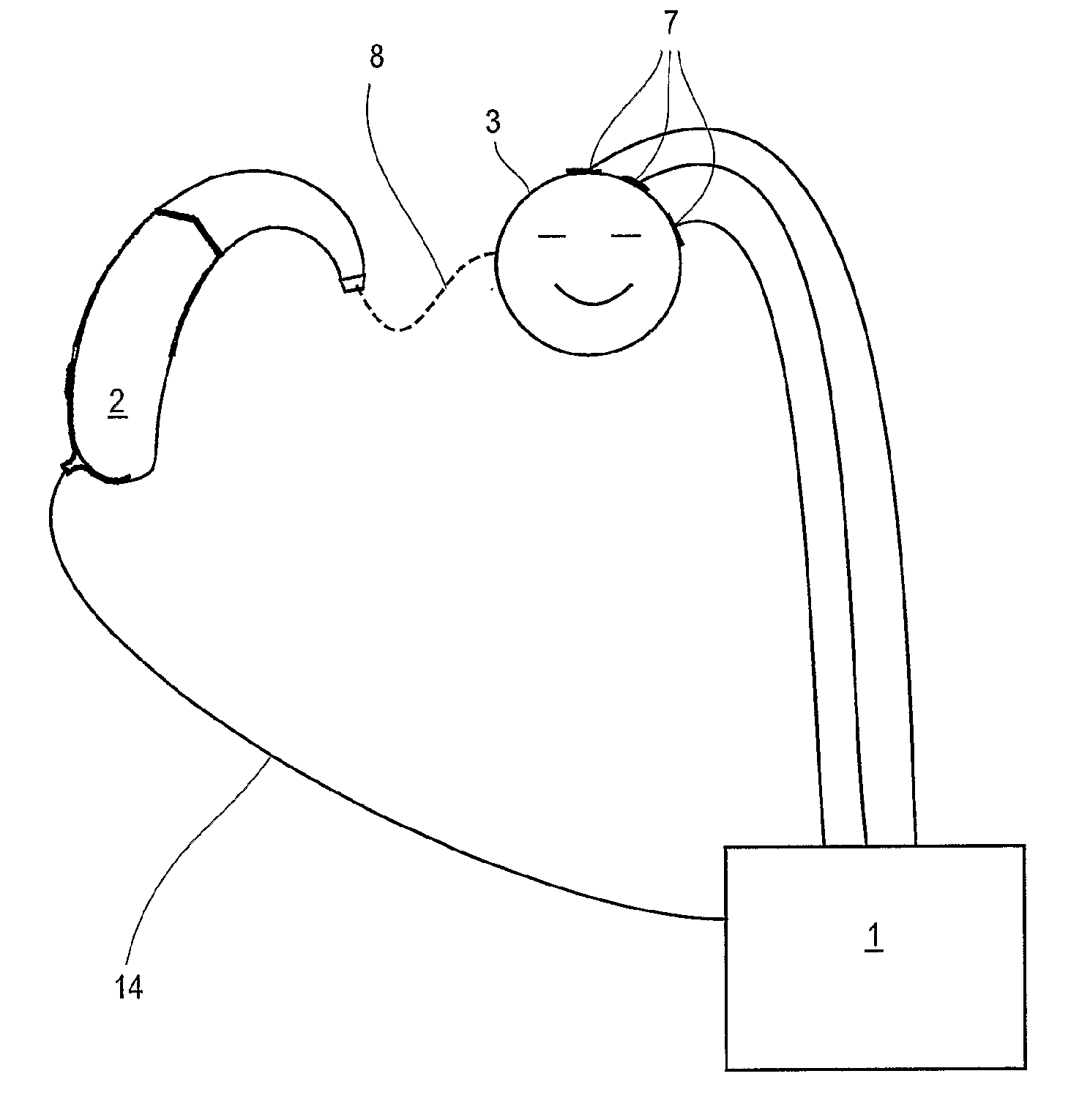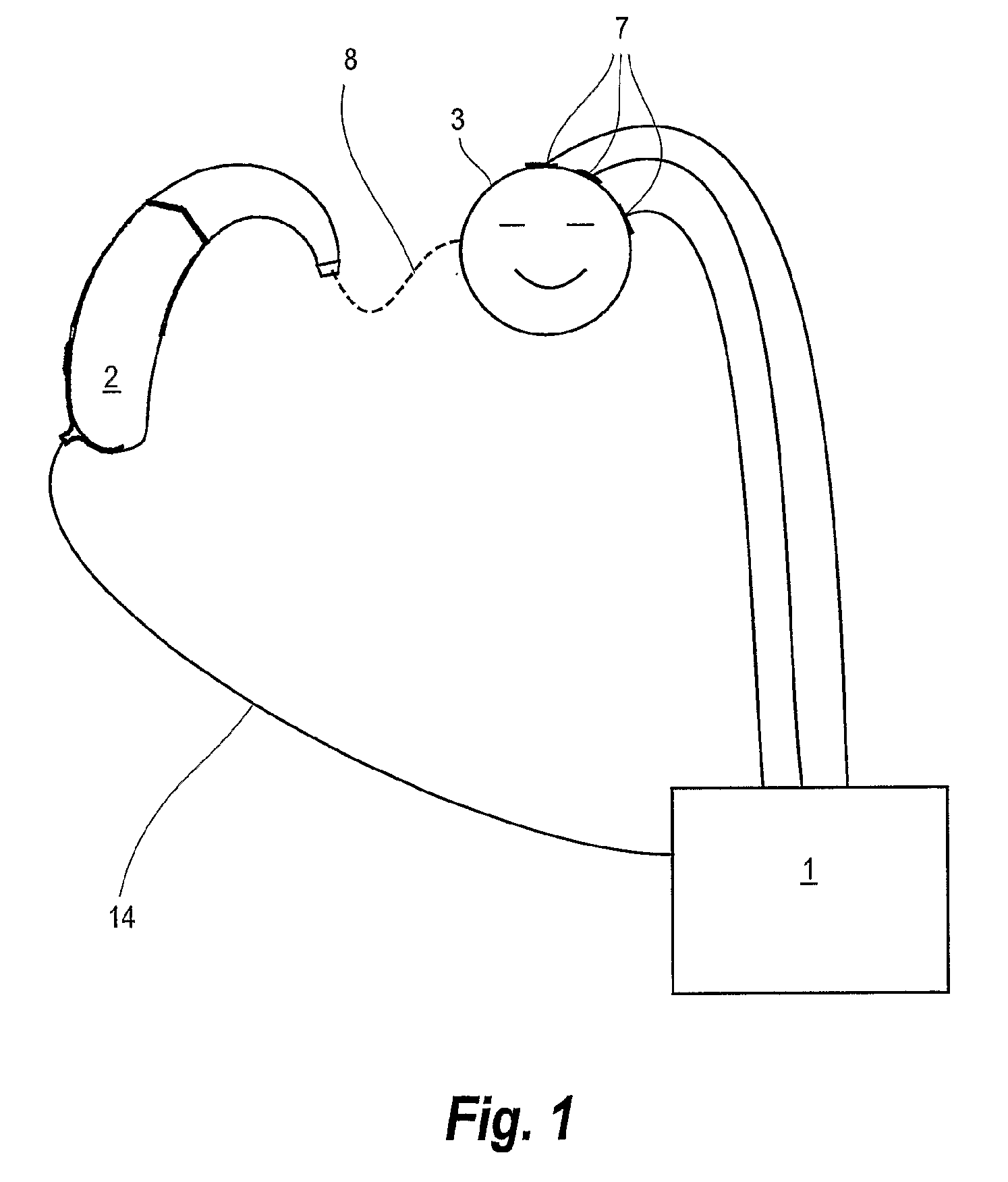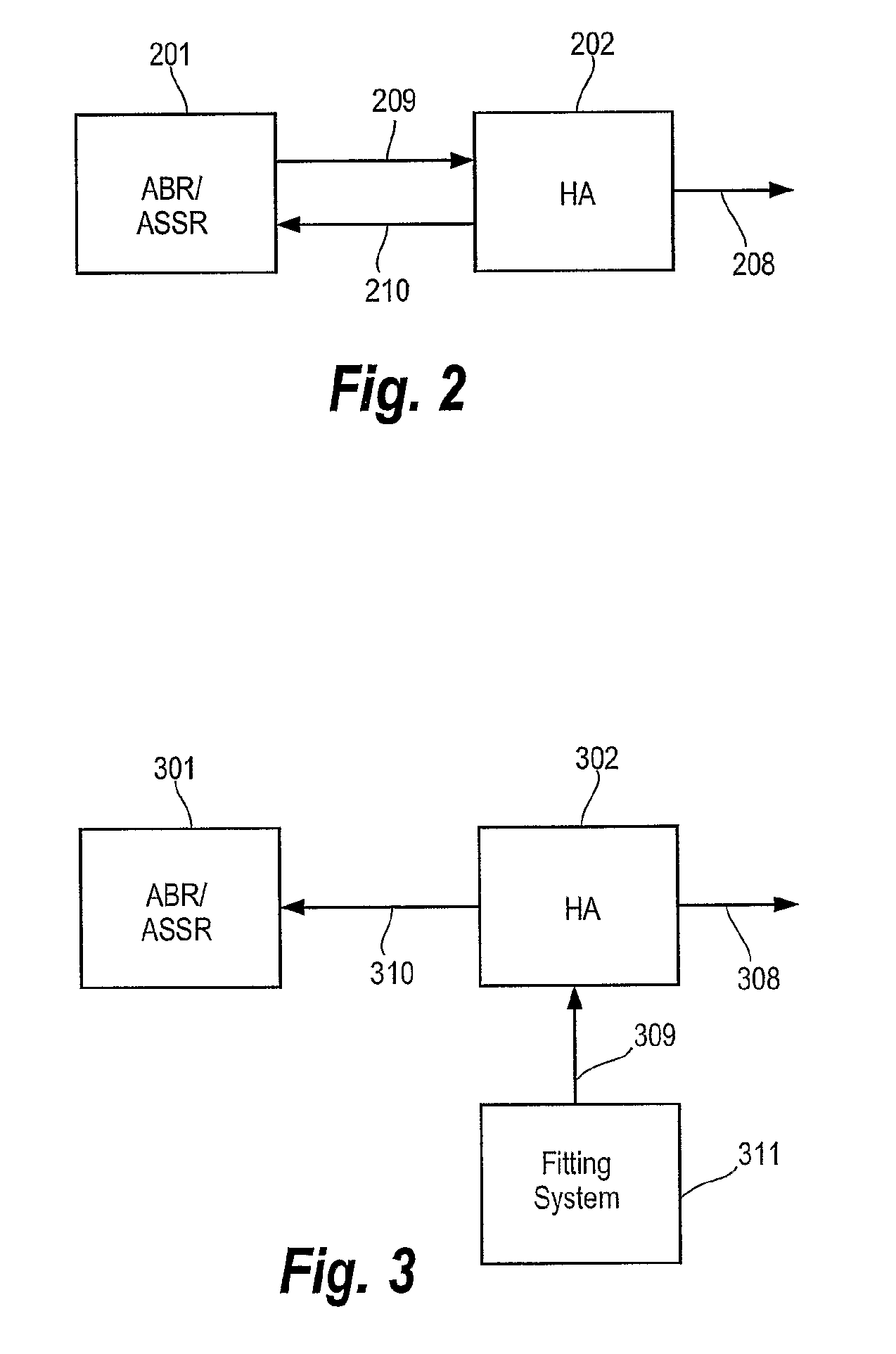System and method for the objective measurement of hearing ability of an individual
a technology of objective measurement and hearing ability, applied in the field of assessment of hearing capacity, can solve the problems of difficult estimation of coupling and/or tubing and/or venting properties of each transducer, limited applicability to common intervention or treatment practices, and inability to obtain information from very young children
- Summary
- Abstract
- Description
- Claims
- Application Information
AI Technical Summary
Benefits of technology
Problems solved by technology
Method used
Image
Examples
Embodiment Construction
[0035]FIG. 1 shows a system for determining the hearing ability of an individual 3. The system comprises an electrophysiological instrument 1 such as an instrument adapted to perform an ABR or an ASSR, a hearing aid 2 that is connected to the electrophysiological instrument 1 by a cable 14, and a number of electrodes 7 that are placed on the head of the individual 3 to have his or her hearing ability determined. The electrodes 7 are connected to the ABR instrument and serve to sample fluctuations of electric potentials evoked by an auditory response to a stimulus signal so the electrophysiological reaction can be determined by use of the ABR or ASSR instrument 1. The hearing aid 2 emits acoustic stimulus signals 8 that the individual 3 may register. In setups according to the prior art, the ABR or ASSR instrument 1 is usually connected to a set of headphones that generates auditory signals to the person to be tested. However, according to the invention the auditory stimulus signals ...
PUM
 Login to View More
Login to View More Abstract
Description
Claims
Application Information
 Login to View More
Login to View More - R&D
- Intellectual Property
- Life Sciences
- Materials
- Tech Scout
- Unparalleled Data Quality
- Higher Quality Content
- 60% Fewer Hallucinations
Browse by: Latest US Patents, China's latest patents, Technical Efficacy Thesaurus, Application Domain, Technology Topic, Popular Technical Reports.
© 2025 PatSnap. All rights reserved.Legal|Privacy policy|Modern Slavery Act Transparency Statement|Sitemap|About US| Contact US: help@patsnap.com



